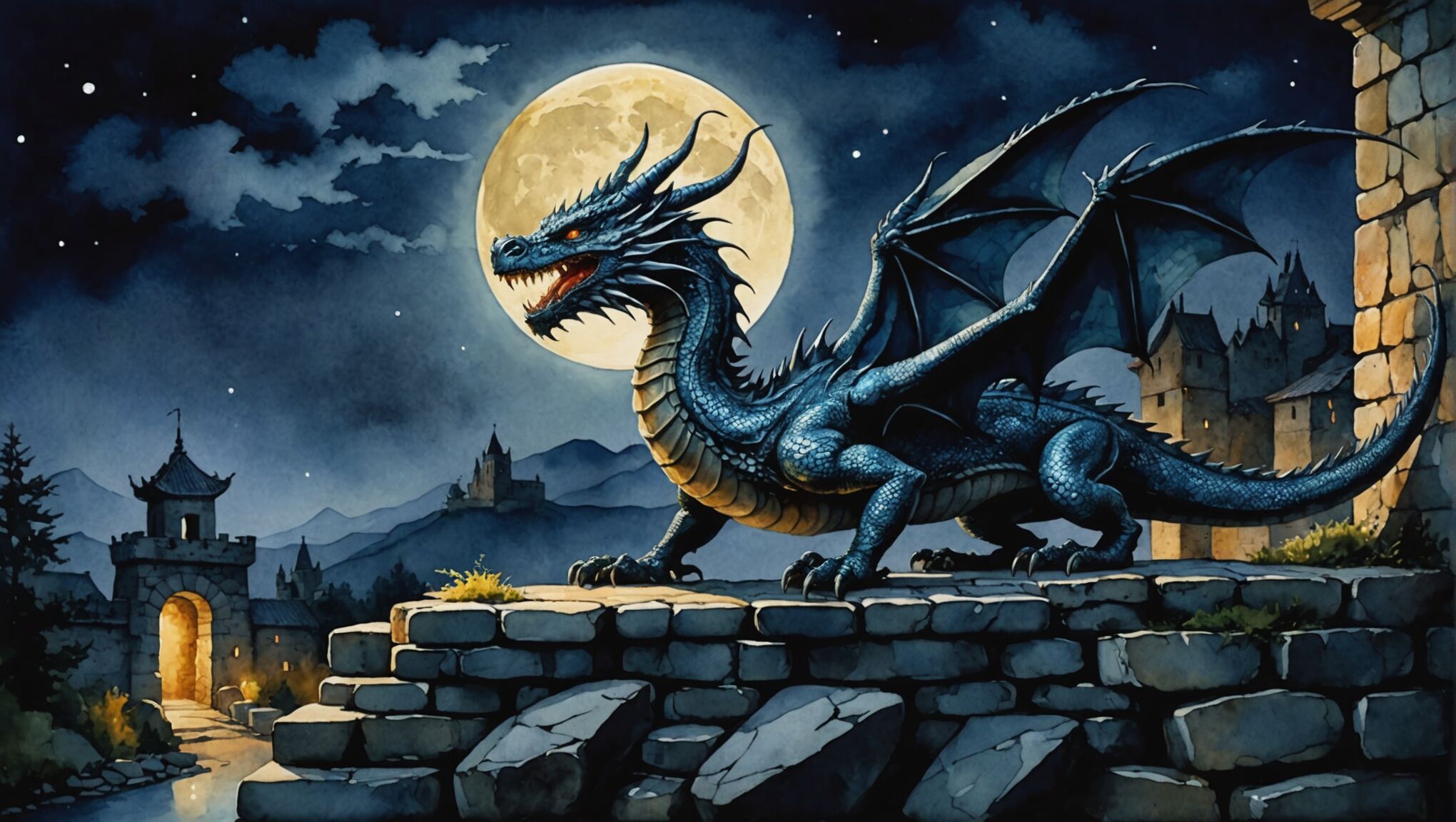blog
How to Avoid Clichés in Fantasy Book Cover Design
Fantasy book covers often fall prey to overused visual tropes that can make a novel blend into the crowd rather than stand out. “A cliché is a truth that has lost its legs from too much running around,” as Somerset Maugham aptly put it. Some of the most prevalent clichés include hooded figures shrouded in mystery, ornate swords or magical weapons taking center stage, and imposing castles silhouetted against dramatic skies. Dragons, while iconic, have become so commonplace that they rarely capture attention unless presented in a truly innovative way. Another overused element is the lone hero or heroine facing away from the viewer, gazing into a fantastical landscape. Magical swirls, glowing orbs, and generic fantasy fonts also contribute to the sea of sameness. Even color schemes can become clichéd, with dark blues and purples dominating many covers in an attempt to convey mystery and magic. It’s crucial to recognize these visual clichés to avoid them or subvert them creatively. By steering clear of these overused elements, designers can create covers that truly reflect the unique aspects of the story within, rather than relying on tired shortcuts to convey genre conventions.
Understanding your target audience
 To create a book cover that truly resonates with your intended readers, it’s crucial to delve deep into understanding your target audience. This process involves more than just identifying age groups or genre preferences; it requires a comprehensive analysis of reader behaviors, expectations, and the emotional connections they seek in fantasy literature.
To create a book cover that truly resonates with your intended readers, it’s crucial to delve deep into understanding your target audience. This process involves more than just identifying age groups or genre preferences; it requires a comprehensive analysis of reader behaviors, expectations, and the emotional connections they seek in fantasy literature.
Start by conducting thorough market research. Analyze bestselling fantasy books within your specific subgenre, paying close attention to cover designs that have proven successful. However, don’t simply aim to mimic these designs; instead, use them as a springboard for inspiration and innovation.
Consider the psychological profile of your target readers. What are their aspirations, fears, and fantasies? How do they perceive themselves, and what kind of escapism or adventure are they seeking? These insights can guide your design choices, helping you create a cover that speaks directly to your audience’s desires and imagination.
“The reader is the final judge. The target of any book is to find its way into the hands and hearts of readers.” – Anita Desai
Engage with your potential readers directly through social media, forums, and book clubs. Conduct surveys or focus groups to gather feedback on various cover concepts. This direct interaction can provide invaluable insights into what visually appeals to your audience and what they find cliché or unappealing.
Remember that different age groups within the fantasy genre may have distinct preferences. Young adult fantasy readers might be drawn to more contemporary and bold designs, while adult epic fantasy fans might appreciate more intricate and classical aesthetics. Tailor your approach accordingly.
Consider the cultural background of your target audience as well. Fantasy readers from different parts of the world may have varied interpretations of symbols and color schemes. What might be intriguing in one culture could be off-putting or misunderstood in another.
Analyze trends in cover design but be cautious about following them blindly. While it’s important to create a cover that feels current and relevant, you also want to avoid producing something that will quickly become dated or lost in a sea of similar designs.
Lastly, don’t underestimate the power of emotional connection. Your cover should evoke the same feelings that your story aims to elicit. If your book is a thrilling adventure, the cover should exude excitement and mystery. If it’s a tale of magical discovery, the design should spark wonder and curiosity.
By thoroughly understanding your target audience, you can create a cover that not only catches the eye but also forms an instant connection with potential readers, compelling them to pick up your book and dive into the world you’ve created.
Developing a unique visual concept

To develop a unique visual concept for your fantasy book cover, start by immersing yourself in the core themes and unique elements of your story. Identify the aspects that set your narrative apart from others in the genre. Is there a particular magical system, a unique creature, or a distinctive setting that defines your world? These elements can serve as the foundation for your cover design.
Experiment with unconventional perspectives or compositions. Instead of depicting a scene head-on, consider an aerial view, a close-up of an intriguing detail, or an abstract representation of a key concept from your story. This approach can instantly set your cover apart from more traditional designs.
Explore different artistic styles that aren’t commonly used in fantasy cover art. For instance, if watercolor illustrations are rare in your subgenre, consider how this medium might bring a fresh look to your cover. Alternatively, you could blend styles, such as combining photorealistic elements with hand-drawn illustrations to create a visually striking juxtaposition.
Think beyond literal representations. Symbolic or metaphorical imagery can be powerful in conveying the essence of your story without resorting to clichéd visuals. For example, instead of showing a dragon directly, you might depict its shadow or use a more abstract representation of its power or significance in the story.
Consider the use of negative space in your design. A cleverly crafted image that utilizes the blank areas of the cover can create a powerful visual impact and convey complex ideas with simplicity. This technique can also help your cover stand out on crowded bookshelves or in small online thumbnails.
Incorporate elements of surprise or optical illusions in your design. A cover that reveals hidden details or changes perspective upon closer inspection can intrigue potential readers and encourage them to pick up the book. This approach can be particularly effective in fantasy, where magic and the unexpected are often central themes.
Our top tips for designing fantasy covers. Click here to learn.
Draw inspiration from sources outside the fantasy genre. Look to other art forms such as sculpture, architecture, or even scientific illustrations for unique visual ideas. This cross-pollination of styles can result in a cover that feels both fresh and familiar to fantasy readers.
Collaborate with artists or designers who aren’t typically associated with fantasy book covers. Their fresh perspective and different artistic background can bring unexpected and innovative ideas to your cover design, helping you break away from genre conventions.
Remember that a unique visual concept doesn’t necessarily mean complex or busy. Sometimes, a strikingly simple design can be the most effective way to stand out in a genre often characterized by elaborate imagery. The key is to find a visual approach that authentically represents your story while offering something visually distinct from other fantasy covers.
Choosing appropriate typography and color schemes
When selecting typography and color schemes for your fantasy book cover, it’s essential to strike a balance between readability and aesthetic appeal. The font choice should not only complement the overall design but also effectively communicate the tone and atmosphere of your story.
For typography, consider using unique, custom-designed fonts that capture the essence of your fantasy world. However, be cautious not to sacrifice legibility for style. A well-designed fantasy font can evoke the right mood without resorting to overused typefaces that have become synonymous with the genre. Experiment with combining different font styles for the title and author name to create visual interest and hierarchy.
Pay attention to the spacing and sizing of your text elements. Proper kerning and leading can significantly enhance the overall look of your cover. Consider how the text interacts with the background imagery – it should stand out without overpowering the visual elements.
When it comes to color schemes, move beyond the typical dark blues and purples often associated with fantasy. Instead, draw inspiration from the unique aspects of your story. If your tale features a particular magical element or setting, use colors that reflect this. For instance, a story set in a mystical forest might use rich greens and earthy tones, while a book about celestial magic could incorporate luminous golds and deep indigos.
Consider using unexpected color combinations to create a memorable and distinctive cover. A well-executed, unconventional color palette can immediately set your book apart on the shelf. However, ensure that your chosen colors work harmoniously together and don’t clash in a way that detracts from the overall design.
The psychology of color is also crucial in cover design. Different hues can evoke specific emotions and associations:
| Color | Associated Emotions/Themes |
| Red | Passion, danger, power |
| Blue | Calmness, wisdom, depth |
| Green | Nature, growth, harmony |
| Purple | Royalty, mystery, spirituality |
| Gold | Wealth, prestige, enlightenment |
Use these associations to your advantage, but don’t be afraid to subvert expectations by using colors in unexpected ways.
Consider the impact of your color choices on different backgrounds and in various lighting conditions. Test your design in both digital and print formats to ensure the colors remain vibrant and the text legible across all mediums.
Gradient effects and subtle color transitions can add depth and sophistication to your cover design. However, use these techniques judiciously to avoid overwhelming the overall composition.
Remember that contrast is key in creating a visually striking cover. Ensure there’s sufficient contrast between the text and background elements to maintain readability, especially when the cover is viewed as a thumbnail online.
Finally, consider how your typography and color choices will translate across a series if applicable. Creating a cohesive visual identity that can be carried through multiple books while still allowing for individual distinction is crucial for building brand recognition in a series.
Incorporating meaningful symbolism
 Symbolism can be a powerful tool in fantasy book cover design, offering a way to convey complex themes and ideas without resorting to literal or clichéd imagery. When incorporating symbolism, it’s crucial to strike a balance between subtlety and clarity, ensuring that the symbols chosen are meaningful to the story and resonate with the target audience.
Symbolism can be a powerful tool in fantasy book cover design, offering a way to convey complex themes and ideas without resorting to literal or clichéd imagery. When incorporating symbolism, it’s crucial to strike a balance between subtlety and clarity, ensuring that the symbols chosen are meaningful to the story and resonate with the target audience.
Consider using cultural or mythological symbols that align with the themes of your book. For instance, if your story draws inspiration from Norse mythology, incorporating runes or a stylized Yggdrasil (the world tree) could add depth to your cover design. However, be mindful of cultural appropriation and ensure that you’re using symbols respectfully and accurately.
Natural elements can serve as powerful symbols. A single feather might represent freedom or transformation, while a gnarled tree could symbolize ancient wisdom or the passage of time. These elements can be incorporated in ways that are visually striking without being overly literal.
Abstract shapes and patterns can also carry symbolic weight. Spirals might represent growth or the cyclical nature of life, while intersecting lines could symbolize the convergence of different worlds or realities. These abstract elements can add a layer of sophistication to your cover design.
Color symbolism can be particularly effective when used thoughtfully. For example, a splash of red in an otherwise monochromatic design might symbolize passion, danger, or a pivotal moment in the story. Consider how different cultures interpret colors and use this knowledge to add nuance to your design.
Symbolic objects related to your story can be powerful if presented in an unexpected way. Instead of showing a typical magic wand, for instance, you might depict its shadow or a close-up of its intricate details, allowing the reader’s imagination to fill in the rest.
Consider using negative space to create hidden symbols or images within your design. This can add an element of discovery for the reader and encourage closer examination of the cover.
Incorporating symbolism from different disciplines can add depth to your design. Astronomical symbols, alchemical signs, or mathematical equations could be woven into the cover art to hint at the complexities of your fantasy world.
Remember that symbolism doesn’t always need to be visual. The arrangement of elements on the cover, the use of symmetry or asymmetry, and even the choice of materials for a physical book can all carry symbolic meaning.
When using symbolism, consider how it will be interpreted by different readers. What might be immediately clear to one person could be obscure to another. Aim for a balance that intrigues without alienating potential readers.
Lastly, don’t underestimate the power of simplicity. Sometimes a single, well-chosen symbol can be more impactful than a complex array of symbolic elements. The key is to choose symbols that are not only visually appealing but also deeply connected to the heart of your story.
By thoughtfully incorporating meaningful symbolism into your fantasy book cover design, you can create a visual representation that not only captures the essence of your story but also invites readers to engage with the deeper themes and ideas within your work.
Creating balance between familiar and innovative elements

Striking the right balance between familiar and innovative elements is crucial in creating a fantasy book cover that both attracts readers and stands out from the crowd. This delicate equilibrium requires a thoughtful approach that honors genre expectations while pushing boundaries creatively.
Begin by identifying the core elements that readers expect from your specific fantasy subgenre. These might include certain color palettes, thematic imagery, or stylistic choices. Rather than discarding these elements entirely, consider how you can present them in fresh, unexpected ways. For instance, if dragons are a key part of your story, instead of showing a traditional dragon, you might depict a close-up of a single, iridescent scale or an abstract representation of dragon fire.
Blend traditional fantasy motifs with elements from other genres or art styles. This cross-pollination can result in intriguing and memorable designs. For example, combining classic fantasy imagery with modern graphic design techniques or incorporating elements of surrealism can create a cover that feels both familiar and refreshingly new.
Consider subverting common tropes in your cover design. If your story features a typical fantasy hero’s journey, your cover could focus on an unexpected aspect of the narrative rather than the hero themselves. This approach acknowledges genre conventions while offering a unique perspective.
Experiment with unconventional materials or textures in your design. A cover that incorporates tactile elements or unusual finishes can provide a fresh sensory experience for readers accustomed to standard print techniques. Even in digital formats, the illusion of texture can add depth and intrigue to your cover.
Use familiar symbols or archetypes in unexpected contexts. A magical amulet floating in a modern cityscape or a mythical creature rendered in a minimalist style can create an intriguing juxtaposition that captures attention while still signaling the fantasy genre.
Play with perspective and scale to present familiar elements in new ways. An extreme close-up of a magical item or a bird’s-eye view of a fantastical landscape can offer a fresh take on classic fantasy imagery.
Incorporate contemporary themes or visual styles that resonate with current readers while maintaining the essence of fantasy. This could involve using modern color trends, integrating relevant social themes, or adopting design elements from popular culture that align with your story’s themes.
Remember that innovation doesn’t always mean complexity. Sometimes, a strikingly simple design that focuses on a single, powerful element can be more effective than an elaborate composition. The key is to ensure that this simplicity is deliberate and meaningful, not a result of lack of creativity.
Ultimately, the goal is to create a cover that feels both comfortably familiar to fantasy readers and excitingly new. This balance attracts genre fans while also piquing the interest of potential new readers, expanding your book’s appeal without alienating its core audience.

